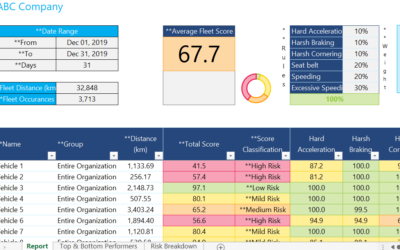ELD Mandate at Full Enforcement
The 1st of April saw the Federal Motor Carrier Safety Administration’s electronic logging device (ELD) mandate come into complete effect. With the arrival of the ELD mandate, many commercial vehicles are obligated to have an electronic logging device installed for the purpose of tracking the number of hours that a driver spends in service.
There was a long-standing resistance to the implementation of the ELD mandate: a resistance which came from a number of drivers and operators, especially those with vehicles without ELDs. This is why the full implementation took so long. Another reason that contributed greatly in fuelling the resistance was that the rules and regulations were unclear to some relevant parties. The regulation came into effect on December 2017, however, the enforcement of the ELD mandate took slightly longer. Since April 1, all commercial vehicles without an ELD will be subjected to legal action according to the rule of law.
Here are some of the things that you need to know so that you’re in the clear with the ELD mandate.
Who is Required to Use ELDs
According to the ELD mandate, the new rule will apply to most of the motor carriers and drivers who have to keep a record of their duty status. There are a few exceptions to this new rule:
- Drivers using paper logs for less than eight days a month to keep records of duty status are not required to use ELDs
- Drivers who have vehicles with engines older than 2000 models
- Drivers operating or towing recreational vehicles part of towaway or driveaway shipment
- Drivers who are operating a power unit that’s part of a towaway or driveaway shipment
- Drivers operating under short haul exceptions by making use of timecards. They will not be required to keep record of duty status or use ELDs
If you’re a driver that’s operating under any of these exceptions, you should make sure that you understand it and you have documentation as proof of your truck’s exemption from the ELD mandate’s rules.
No More Grace Period
The ELD mandate was meant to gradually come into implementation. However, that grace period ended on April 1.
Hours of Service Rules Still The Same
There has been some confusion about the hours of service rules being subject to change for some drivers. If you’ve been wondering about that as well, you should know that there have been no changes made to the hours of service rules according to the ELD mandate. There are however, a few non-compliance problems which drivers might not have known about earlier.
One thing to note is that once a driver returns to duty after 10 hours of being off duty, that driver cannot operate for more than 14 consecutive hours. If this means that a driver has to be detained at a shipper or receiver’s facility, so be it. Many drivers have reported detention periods that are not as long as they actually were.
Drivers Without Functional or Compliant ELDs can be Placed Out of Service
According to the ELD mandate, any drivers who are required to make use of ELDs can be put out of service for a number of reasons that are as follows:
- If the driver is using a logging device not registered with the FMCSA
- If drivers do not produce and transfer the data to law enforcement officers or print or display the data onscreen. A driver that has an AOBRD can be placed out of service if the driver is unable to show RODS.
- If the driver indicates a special driving category, when it is not the case, because that’s seen as false logging.
- If drivers required to have an ELD do not have one.
Penalties For Not Complying With ELD Mandate
As of April 1, drivers who do not comply with the ELD mandate are going to be placed out of service. The out of service period will last for 10 hours for the truck drivers who fail to comply with the ELD mandate. When this period ends, drivers will be allowed to continue service to their next scheduled stop using paper logs. Beyond that point, drivers will not be allowed to continue without an ELD. If the driver proceeds without an ELD to the next stop after the out of service period has ended, the driver will again be placed out of service and the motor carrier will be subjected to more penalty.
The fines for not complying with the ELD mandate are the same the driver would face by not having paper logs as the rules were before ELDs came into effect.
Making Sure Your ELD is Compliant
The FMCSA has a database of the devices that have been certified to meet the specifications according to the ELD mandate. The responsibility to make sure that the ELD is registered falls upon the motor carrier. This means that the motor carrier not only has to check for the registration but also the revocation on a regular basis. The ELDs that are registered or revoked are on the list at https://3pdp.fmcsa.dot.gov/ELD/ELDList.aspx.
In the case that an ELD has been removed from the list of registered devices, the Federal Motor Carrier Safety Administration will make the adequate efforts to properly notify the general public and all the users who are going to be affected by the change. Of course, the drivers and motor carriers are advised to register for the ELD updates so they will get the notification if and when an ELD has been put down on the Revocation List.
The ELD mandate is not as big a problem as some are stating. It’s simply a matter of complying to the rules and regulations to improve on the safety of operational procedures.
Source: https://www.worktruckonline.com/news/story/2018/03/eld-mandate-10-things-you-need-to-know-before-the-final-deadline-this-sunday.aspx






